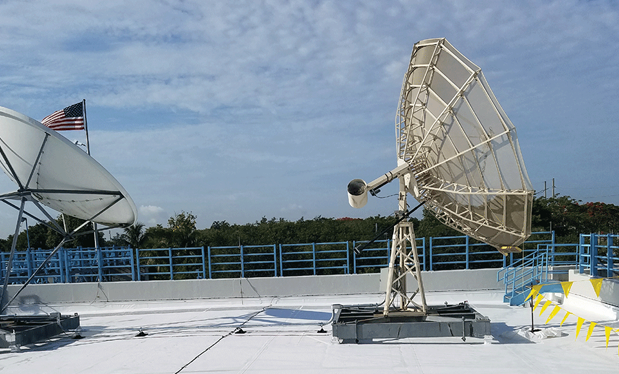OSHA penalties adjusted for inflation
As of Jan. 2, civil penalties for violations of Occupational Safety and Health Administration (OSHA) standards increased 2 percent to adjust for inflation, according to www.natlawreview.com.
In a Federal Register notice, the Department of Labor (DOL) increased civil penalties for various regulated areas, including immigration, wage and hour, child labor and OSHA. Under the Federal Civil Penalties Inflation Adjustment Act Improvements Act of 2015, DOL can adjust civil penalties for inflation no later than Jan. 15 each year.
According to www.constructiondive.com, DOL raised OSHA fines by 78 percent in August 2016; the increase was the first since 1990. The change was part of the 2016 budget bill and mandated the agency bring its penalty levels in line with the Consumer Price Index and be adjusted accordingly each following year.
The new penalties apply to any citations issued during the remainder of 2018. OSHA penalties for other-than-serious, serious and failure to abate violations increased by $319 from $12,615 per violation to $12,934 per violation. The penalty for willful and repeat violations increased by $2,587 from $126,749 per violation to $129,336 per violation.
The penalty increases apply to federal OSHA states. OSHA expects states operating their own occupational safety and health programs will align penalty structures with federal OSHA structures so their programs are equally effective.
General contractor cited after employee's rooftop fall
The Occupational Safety and Health Administration (OSHA) has cited general contractor Benco Builders of the Virginias Inc., Princeton, W.Va., for multiple safety hazards after an employee was seriously injured in a 19-foot fall from a roof, according to www.osha.gov. Benco Builders of the Virginias faces proposed penalties totaling $86,916.
Following the accident, OSHA inspectors visited a work site where Benco Builders of the Virginias was responsible for demolishing a structure and constructing two buildings. OSHA issued one willful citation for failure to provide and require employees to wear fall protection during roofing work. Benco Builders of the Virginias also was cited with eight serious violations for exposing workers to electrical, scaffolding and forklift hazards and for providing defective and uninspected fall-protection equipment. OSHA also issued one other-than-serious citation for the contractor's failure to develop and implement a written hazard communication program for hazardous materials.
"Falls remain the leading cause of injury and death in the construction industry," says Prentice Cline, OSHA's Charleston area office director. "Employers must provide proper fall protection and follow all safety requirements to prevent incidents such as this from occurring."
Benco Builders of the Virginias has 15 days from receipt of its citations and penalties to comply, request an informal conference with OSHA's area director or contest the findings before the independent Occupational Safety and Health Review Commission.
Ohio roofing contractor cited for safety violations
The Occupational Safety and Health Administration (OSHA) has cited Casey Bortles, a Holland, Ohio-based roofing contractor, for exposing employees to falls and other safety hazards, according to www.osha.gov. Bortles, who is not an NRCA member, faces proposed penalties totaling $91,629.
On Oct. 26, 2017, inspectors observed five roofing workers at a Waterville, Ohio, residential site working at heights greater than 8 feet without adequate fall protection and employees using nail guns without eye protection. OSHA cited the contractor for those safety violations, as well as for failing to train workers regarding fall hazards and for not developing and maintaining an accident prevention program. Bortles has been cited for similar violations four times since 2014.
"This employer continues to expose employees to fall hazards by failing to comply with federal safety requirements," says Kim Nelson, OSHA's Toledo area office director. "Employers are responsible for ensuring employees are adequately protected from the hazards that exist at their worksites."
Bortles has 15 business days from receipt of the citations and penalties to comply, request an informal conference with OSHA's area director or contest the findings before the independent Occupational Safety and Health Review Commission.
Department of Labor increases civil penalties for violations
Civil penalties for violations of laws enforced by the Department of Labor's (DOL's) Wage and Hour Division have increased about 2 percent, according to Bloomberg BNA. The increased penalties for failing to comply with federal rules applicable to family and medical leave, child labor and foreign workers occurred under a final rule announced by DOL Dec. 29, 2017. Under federal law, agencies must annually adjust civil monetary penalties for inflation.
The new rule raises the maximum penalty for repeated or willful minimum wage and overtime violations from $1,925 to $1,964. The penalty for an employer that fails to post information about employees' rights under the Family and Medical Leave Act now is $169, up from $166. An employer that improperly requires or asks an employee or prospective employee to take a lie detector test or retaliates against an employee or prospective employee who refuses now faces a $20,521 penalty, up from $20,111.
Penalties for child labor violations also have increased. Employing children could result in fines of $12,529, up from $12,278. Serious workplace injuries or deaths to children now could result in fines of $56,947, up from $55,808.
Employers that break rules governing foreign workers in specialty occupations (those with H-1B visas) also face higher penalties. Retaliation and discrimination penalties increased from $7,370 to $7,520, and willful violations that displace a U.S. worker increased from $51,588 to $52,641.
OSHA inspections increased during fiscal year 2017
The number of worker safety and health inspections increased 1.4 percent during fiscal year 2017 compared with fiscal year 2016, according to Bloomberg BNA.
Occupational Safety and Health Administration (OSHA) inspectors completed 32,396 inspections during fiscal year 2017 compared with 31,948 inspections during fiscal year 2016, which was the fewest inspections OSHA had conducted in 20 years. The 2017 total still is well below the numbers reported during the Obama administration, when OSHA conducted more than 40,600 inspections during fiscal years 2011 and 2012.
David Michaels, OSHA's former administrator, says one reason may be OSHA's move during the Obama era from simply counting the number of inspections to using a data-driven system that prioritized the types of inspections that had the most effect in terms of preventing fatalities, severe injuries and work illnesses.
OSHA officials say a reason for the decline in inspections since the Obama administration's term could be the agency's budget has not kept pace with inflation, resulting in staff cutbacks. OSHA was authorized to have 1,262 enforcement staff members during fiscal year 2017, which is a 20 percent decrease from the 1,583 enforcement staff members approved for fiscal year 2012.
The increase in fiscal year 2017 inspections reportedly could be attributed in part to OSHA's regional and area offices having more leeway to set inspection priorities.
About 45 percent of the year's inspections were "programmed," resulting from efforts to emphasize a specific hazard, such as breathable silica. The remaining inspections were "unprogrammed," which often are short-notice responses to industrial or construction accidents. Inspections affected the construction industry most significantly during fiscal year 2017 with 16,889 visits—a 9 percent increase compared with fiscal year 2016. Inspections at manufacturing sites—the second largest industry group—decreased 5 percent from fiscal year 2016 levels to 7,198.
The Occupational Safety and Health Review Commission received 2,168 appeals from employers in fiscal year 2017 compared with 2,183 in fiscal year 2016. The average fiscal year 2017 fines were up 57 percent for a willful violation at $65,228; up 30 percent for a repeat violation at $11,359; and up 48 percent for a serious violation at $3,553.



